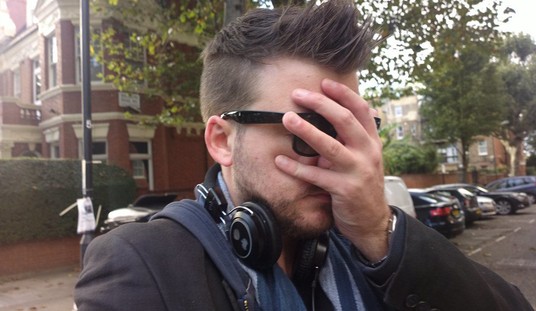Both the Milwaukee Journal-Sentinel and local activists rallying behind 31-year old Theodore Edgecomb are pointing to the recent verdict in the Kyle Rittenhouse trial as a “test of whether a Black man can rely on self-defense the same way a white vigilante teen backed by conservative and gun rights advocates could,” but there are some big differences between the allegations against the two men.
That’s not to say that Edgecomb may not have a valid self-defense claim, and just like Kyle Rittenhouse he should start with a presumption of innocence in a court of law, but this isn’t a case of Edgecomb firing his gun after he was chased down and attacked. In fact, it seems beyond dispute that in the confrontation between Edgecomb and attorney Jason Cleereman, Edgecomb was the first one to get physically aggressive.
According to records, Edgecomb was riding against traffic on Brady Street when he passed Cleereman, a passenger in a westbound car driven by his wife. She says she had to swerve and Cleereman yelled something at the cyclist.
While the couple was stopped at the light at North Humboldt Avenue, Edgecomb, who had turned around, rode up to the open passenger window and asked Cleereman if he had been talking to him.
After words were exchanged, Edgecomb punched Cleereman in the face, then rode away westbound on Brady. A few blocks later, video shows Edgecomb turn right onto the Holton Street bridge, followed a moment later by the Cleereman’s Subaru, which pulls over just behind Edgecomb, who has ridden up onto the sidewalk.
Video shows Cleereman exit the car and go aggressively toward Edgecomb, who fired one shot before exiting, with his bike, down the stairs to below the bridge.
The Cleeremans had been drinking at a bar, and Jason Cleereman’s blood-alcohol content was .12, and he also had THC in his system, according to court records.
After the shooting, Edgecomb fled the area, but unlike Kyle Rittenhouse, who turned himself in to police in his hometown of Antioch, Illinois a few hours later, the 31-year old accused of murdering Jason Cleereman instead avoided police for months while spending time in Florida and Kentucky, where he was eventually arrested in March of this year after a traffic stop.
Jurors should hear about that, prosecutors say, because it proves Edgecomb was conscious of his own guilt. The defense says it would unfairly prejudice Edgecomb and is irrelevant since he admits to the shooting.
Given his claim of self-defense, they say, the only question for jurors to decide is whether it was reasonable for Edgecomb to use deadly force. Prosecutors have the burden of convincing jurors the decision to shoot was not reasonable.
At the time, Edgecomb was out on bail for two other charges, one a felony, one a misdemeanor. Conditions of his release in each case was that he did not possess a gun. That’s why he fled, his lawyers say, not because he knew he was guilty of shooting Cleereman. Edgecomb is charged with two counts of bail jumping in addition to the homicide count.
Possessing a gun in violation of the law doesn’t negate your right to self-defense, though it might very well lead to criminal charges even if you’re found to have acted lawfully to protect your life. The biggest hurdles for Edgecomb in claiming self-defense would appear to be the allegation that he punched Cleereman first. Even as the initial aggressor, the 31-year old doesn’t lose all self-defense claims, but the burden is raised substantially under Wisconsin law.
(2) Provocation affects the privilege of self-defense as follows:(a) A person who engages in unlawful conduct of a type likely to provoke others to attack him or her and thereby does provoke an attack is not entitled to claim the privilege of self-defense against such attack, except when the attack which ensues is of a type causing the person engaging in the unlawful conduct to reasonably believe that he or she is in imminent danger of death or great bodily harm. In such a case, the person engaging in the unlawful conduct is privileged to act in self-defense, but the person is not privileged to resort to the use of force intended or likely to cause death to the person’s assailant unless the person reasonably believes he or she has exhausted every other reasonable means to escape from or otherwise avoid death or great bodily harm at the hands of his or her assailant.(b) The privilege lost by provocation may be regained if the actor in good faith withdraws from the fight and gives adequate notice thereof to his or her assailant.(c) A person who provokes an attack, whether by lawful or unlawful conduct, with intent to use such an attack as an excuse to cause death or great bodily harm to his or her assailant is not entitled to claim the privilege of self-defense.
Did Edgecomb engage in conduct “likely to provoke others to attack him” by punching the lawyer in the face at a red light? I’d argue yes. But did he also “withdraw from the fight” in good faith and give adequate notice to his assailant? He did apparently ride off on his bike after the sucker punch, but made no attempt to run away from Cleereman when the attorney got out of his car a few blocks later and began running towards him.
While Wisconsin doesn’t have a formal duty to retreat, the initial aggressor in any fight that results in deadly force being used is required to have “exhausted every other reasonable means to escape from or otherwise avoid death or great bodily harm at the hands of his or her assailant.” It’s hard to argue that Edgecomb’s actions met that threshold, given that Cleereman’s widow says the man never moved or tried to flee when he saw her husband approaching. Instead, in her words, he waited until Cleereman was almost within arms reach before shooting him in the head.
Without having access to all the evidence, I have no idea if Theodore Edgecomb was acting lawfully to protect his life that night, but I’d say there’s definitely probable cause to at least charge him with murder for Cleereman’s death. Obtaining a conviction, however, is likely going to hinge on the question of whether or not Edgecomb could still be considered the original aggressor after he rode away from the scene of the original confrontation and sucker punch, as well as whether or not Cleeseman actually posed an imminent danger to his life when Edgecomb fired the fatal shot.









Join the conversation as a VIP Member